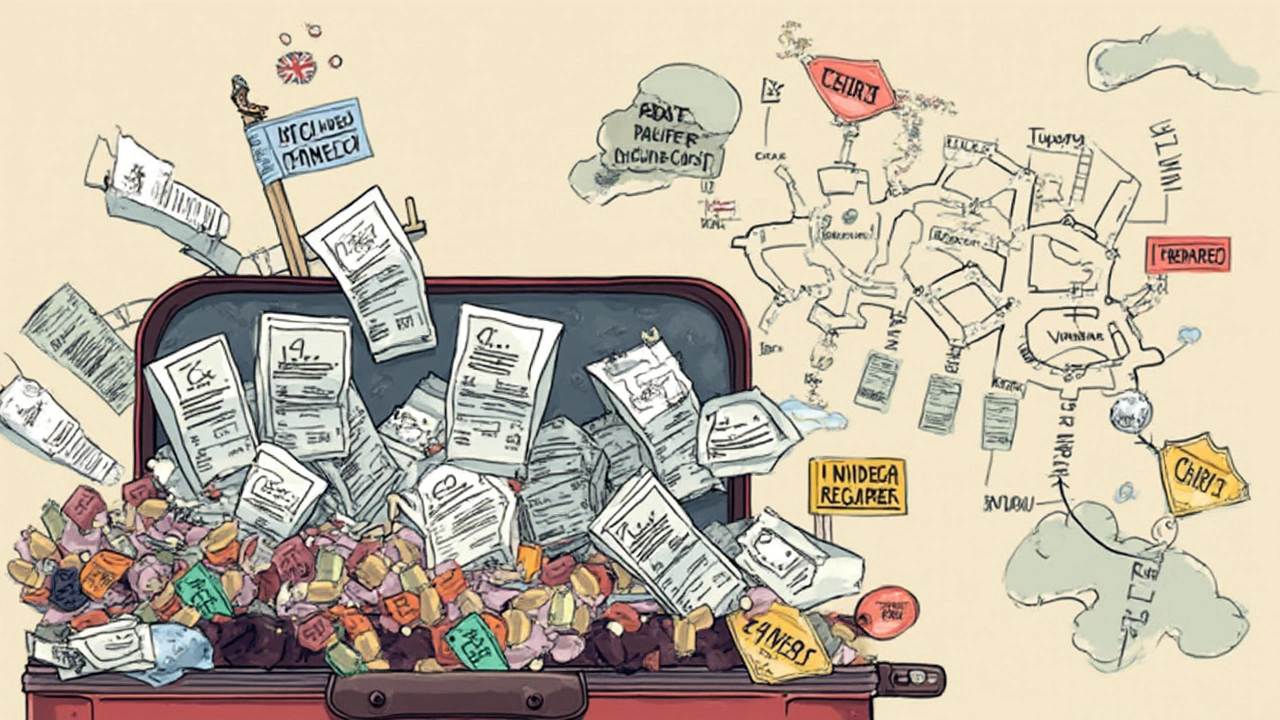The big draw of all-inclusive holidays is that you’re supposed to pay once and never stress about your wallet again—especially when it comes to food. But ask three different travelers what “all-inclusive” really means, and you’ll hear three totally different answers. It gets confusing fast.
Here’s the truth: Most all-inclusive packages do cover your meals, snacks, and drinks, so you usually won’t have to pull out your credit card every time you get hungry. For families (especially with a kid like my Lia who suddenly gets hungry the minute we step off the shuttle), that peace of mind can make the difference between a relaxing break and a running tab of surprise charges.
But don’t just assume everything is truly “all you can eat, wherever, whenever.” Some resorts are super generous, while others have fine print that can bite you. Sometimes, you’ll find certain restaurants, top-shelf drinks, or fancier meal options aren’t part of the deal and cost extra. Then there are snacks by the pool (hello, ice cream) that might only be free at specific hours.
- What Does 'All-Inclusive' Actually Cover?
- Where Food Might Still Cost Extra
- Tips To Make the Most of Free Dining
- Common Gotchas and Hidden Charges
- How to Pick the Best All-Inclusive for Food Lovers
What Does 'All-Inclusive' Actually Cover?
The term all-inclusive can feel like a magic ticket, but what’s included really depends on the resort. At most places, this means three meals a day (breakfast, lunch, and dinner), snacks between meals, soft drinks, and a selection of alcoholic drinks. Some resorts also throw in room service, minibar goodies, or even afternoon tea. But the exact details can be a little tricky, so it’s smart to check your package before you book.
Here’s the basic breakdown of what people usually get in an all inclusive food package:
- Main buffet: Unlimited visits, usually with lots of options—even for picky eaters.
- Poolside snacks: Hot dogs, burgers, fries, or ice cream, but sometimes only during certain hours.
- Casual and theme restaurants: Often included, but some require reservations or charge extra for special dishes.
- House drinks: Local beer, spirits, wine, and soft drinks—premium brands might cost more.
- Breakfast in bed: Some places include room service, but double-check—sometimes there’s a service fee.
Here’s a quick look at typical inclusions based on a 2023 survey of large Caribbean and Mediterranean resorts:
| Included | Not Always Included |
|---|---|
| Main buffet meals | Fancy à la carte restaurants |
| House drinks & snacks | Imported/premium alcohol |
| Soft drinks, juice, coffee | Room service beyond certain hours |
| Kid-friendly meals | Specialty seafood or steak nights |
One thing to remember: even within the same hotel brand, you’ll find differences depending on which property and what level of room you book. Some places even have several ‘tiers’ of all-inclusive, so the more expensive packages unlock fancier restaurants or more drink options. Always look for the fine print. If you hate surprises on your bill (don’t we all?), it pays to ask questions before you check in.
Where Food Might Still Cost Extra
This is where folks get tripped up. Even with an all inclusive wristband, some things just aren’t covered. Most resorts include a buffet, a couple of à la carte restaurants, and snack bars. But there’s usually a catch somewhere.
If you’re eyeing that fancy steakhouse or the sushi spot, check whether they’re included or if there’s a surcharge. It’s super common for a few “specialty” restaurants to show up as an extra charge on your bill. Sometimes you get a set number of visits for free, and after that, you’re paying out of pocket.
Drinks are another slippery area. Basic stuff—like soft drinks, house wine, and local beer—are normally no problem. But if you want top-shelf liquor, craft cocktails, or bottles of wine, many places treat those as “premium” and expect you to pay up. Room service can go either way: sometimes it’s included, other times it’s only free at certain hours or carries a delivery fee.
If you’re traveling with kids (trust me, I’ve learned this one), ice cream and snack shacks can be tricky. At some resorts, these are part of the package, but others have rules like “free only from 2-4 pm” or only basic flavors are included. And don’t forget about activities like beach barbecues, lobster nights, or candlelit dinners by the sea—those are almost always extra, even if the main restaurants are ‘free.’
Before you book, scroll through the resort’s official list of restaurants and bars. Some even post sample menus online with prices marked for anything not included. Doing a quick check saves you from surprises later, especially if you’re planning meals around dietary needs or picky eaters in tow.

Tips To Make the Most of Free Dining
Once you’ve got your wristband on, you’ll want to get every bit of value from those included meals and snacks. Resorts can have big differences in how they handle ‘all you can eat,’ so a little planning goes a long way. Here’s how you can make the dining side of your all inclusive trip work for you—without feeling like you’re missing out or getting tricked.
- Scope Out Your Options: When you first arrive, check out all the places that serve food. Many properties have a buffet, a couple of ‘à la carte’ restaurants, and grab-and-go snack counters. Find out which ones are fully included and if you need reservations anywhere.
- Book Specialty Restaurants Early: Spots like the steakhouse or seafood usually require advance booking and fill up fast, especially at family-friendly resorts. Hit the concierge right after check-in to snag a spot for your preferred night.
- Check Meal Times and Dress Codes: Buffets have set meal times, so double-check what’s open when. Some à la carte spots ask for ‘smart casual’ in the evenings—no flip-flops or swimsuits. Trust me, nothing’s worse than walking back to the room because you need real shoes for dinner.
- Dietary Restrictions? Don’t be shy to flag allergies or special diets with the staff. Most all-inclusives these days are ready for vegetarians, gluten-free, and allergy-friendly meals, but giving a heads-up early helps them actually deliver.
- Make the Most of Snacks and Room Service: Poolside pizza and late-night nachos can be lifesavers after a long day. Ask if room service is covered, since some resorts include it and others don’t.
For a quick look at how food choices might line up at typical resorts, here’s a table based on TripAdvisor and Expedia reviews from guests in 2024:
| Resort Type | Included Restaurants | Specialty Dining (Free/Extra) | Room Service | Snack Bars |
|---|---|---|---|---|
| Mid-range (Dominican Republic) | Buffet + 2 à la carte | Usually free, some dishes extra | $5-10 fee | All day |
| Luxury (Mexico) | Buffet + 6 à la carte | Free, unlimited | Included 24/7 | 24/7 snacks |
| Budget (Spain) | Buffet only | Not included | Extra charge | Set hours |
Don’t be afraid to ask the staff directly about what’s covered—the friendlier you are, the more helpful they tend to be. And if you’re traveling with kids, sneak some fruit or snacks for them to have between meals. Parents know: a little stash in your beach bag can save the afternoon.
Common Gotchas and Hidden Charges
If you think “all-inclusive” means putting your wallet away for good, think again. Resorts are way better at marketing than they are at making every little thing truly free. Here are the things that trip up most travelers when it comes to food and drinks.
- Specialty Restaurants: Usually, there’s a dreamy steakhouse or an upscale sushi spot on the property but—surprise!—they’re not part of your basic all-inclusive package. These places almost always charge extra and might even need a reservation.
- Premium Drinks: The free stuff is often local beer, house wine, and well spirits. If you’re after imported brands, craft cocktails, or that fancy bottle of bubbly, expect a bill.
- Snack Bars and Room Service: Some resorts include snacks and room service, but others charge a delivery fee or only allow a few free orders per day.
- Theme Nights or Private Events: Say there’s a beach BBQ or lobster night. It might sound fun, but check if it's included—special events often have a cover charge, and a lot of people don't realize until check-out.
- Mini Bar Restocks: That fridge full of drinks in your room isn’t always unlimited. Some places charge for restocks or limit what’s complimentary.
Gratuities can also be sneaky. Some all-inclusives add an automatic service fee to your bill for certain restaurants or room service, even if you already paid up front.
Here’s how some of these extra costs look at real resorts:
| Charge Type | Common Extra Cost | Where It's Found |
|---|---|---|
| Specialty Dining | $20–$60 per person | Sit-down steak or seafood restaurants |
| Premium Drinks | $5–$12 per drink | Lounge bars, pool bars |
| Room Service Delivery | $5–$10 per order | 24-hour room service |
| Special Events | $30–$100 per event | Themed dinners, gala nights |
| Mini Bar Restock | $2–$8 per item | In-room mini fridge |
If you’re traveling with kids, some kid-friendly activities that seem like “part of the fun” are actually billed separately, especially at resorts with water parks or cooking classes. It pays to read the fine print—even if you don’t want to, it’ll keep you from getting blind-sided at check-out.
The easiest tip to remember: always ask what’s included the moment you check in. That way, you don’t end up arguing over a $9 ice cream or $60 lobster when you’re supposed to be unwinding. The real win with an all inclusive is knowing exactly what’s free—so you can relax and enjoy it.

How to Pick the Best All-Inclusive for Food Lovers
If food is a huge part of your holiday, you want to make sure your all-inclusive spot actually lines up with your appetite. Not every place that promises endless buffets is worth your hard-earned cash. There are some key things to check so you don’t end up stuck with bland food or surprise bills.
First, scope out the number and style of restaurants. Some resorts only have one or two buffets (which can get old, trust me), while others offer à la carte dining, food trucks, or even specialty restaurants that rival city hotspots. Look out for spots with themed nights, cooking classes, or fresh local dishes—those can make a huge difference in your experience.
Second, check if the all inclusive deal actually covers everywhere you want to eat. Many places advertise great restaurants but only let you access them for an extra charge. The real winners are the places where every eatery is included, or at least gives you a set number of free visits to fancier places. Some higher-end resorts (like Sandals or Club Med) tend to be more upfront about what’s covered, as do family-friendly brands like Beaches.
Third, pay attention to when food is available. Some resorts only offer snacks or meal service at certain hours, so if you’re the type to get late-night cravings, check if 24-hour room service is free. Bonus tip: ask about drink options, too—because paying for a cappuccino or a smoothie every day adds up if those aren’t in your package.
- Read real guest reviews about the food. People are brutally honest about what’s delicious and what’s just plain sad.
- Look for resorts with options for dietary needs (vegetarian, gluten-free, etc.), if that’s important for you or your family.
- Check social media for recent food pics from the property, not just the ones on the official website.
- Ask your travel agent or message the resort directly if you’re not sure what’s covered.
If you care about themed nights or a specific style of cooking—say authentic Mexican, fresh sushi, or a pile of pancakes—double check that the place offers what you actually want. There’s nothing worse than dreaming about beachside tacos and finding out they’re an extra 30 bucks. Take ten minutes to read the fine print, and you’ll avoid the most common food let-downs. Your stomach (and your budget) will thank you.
